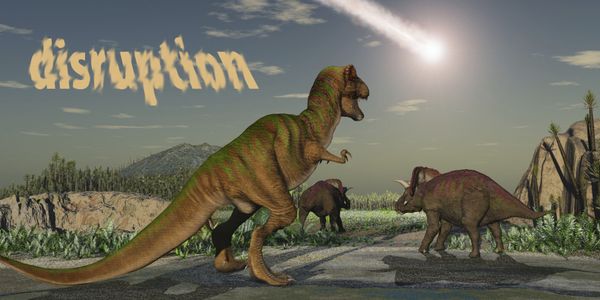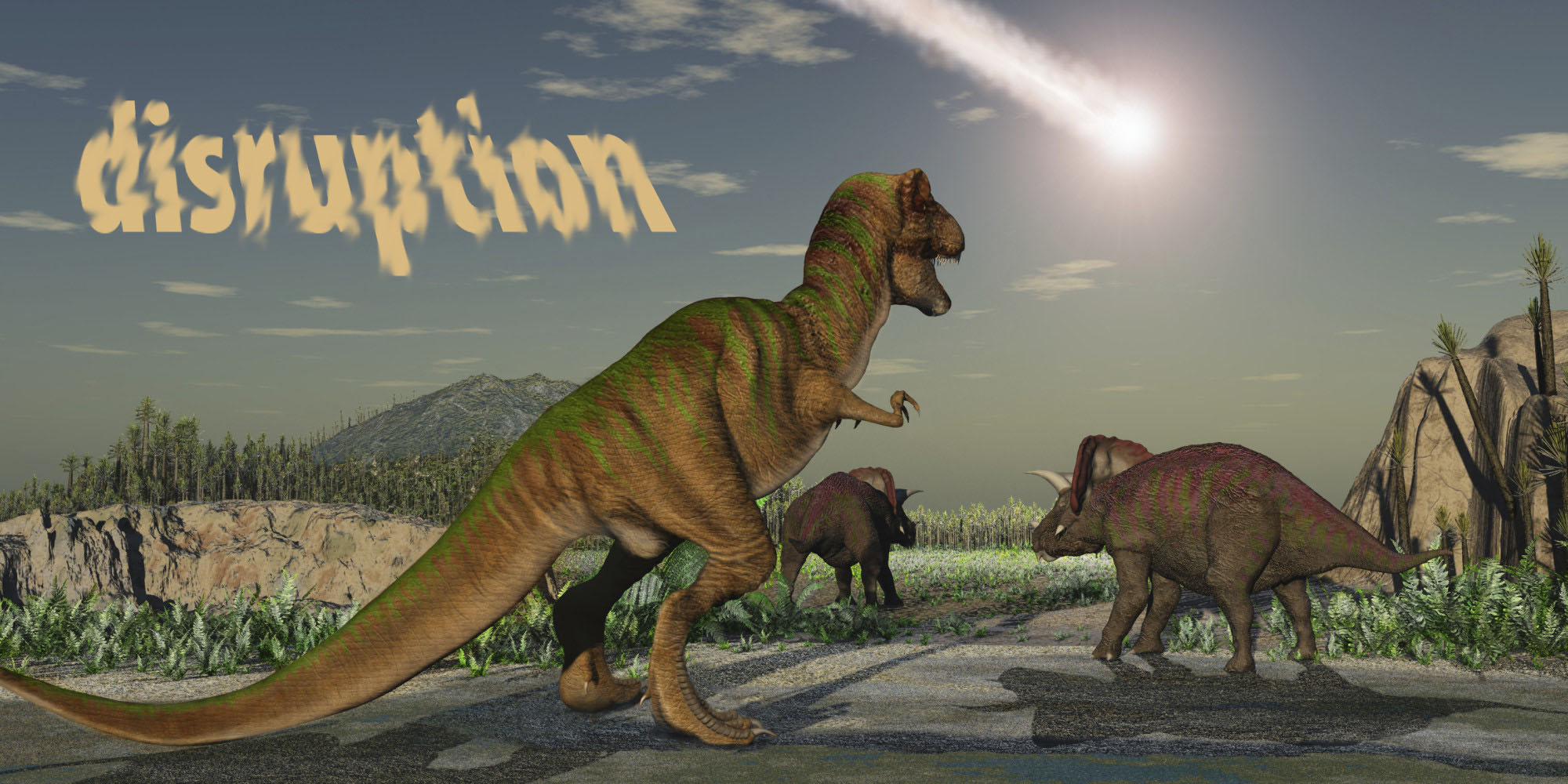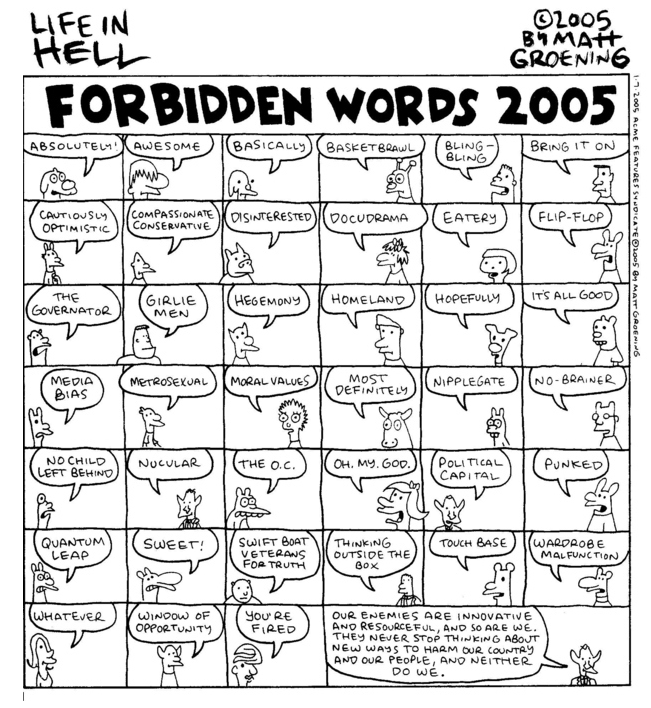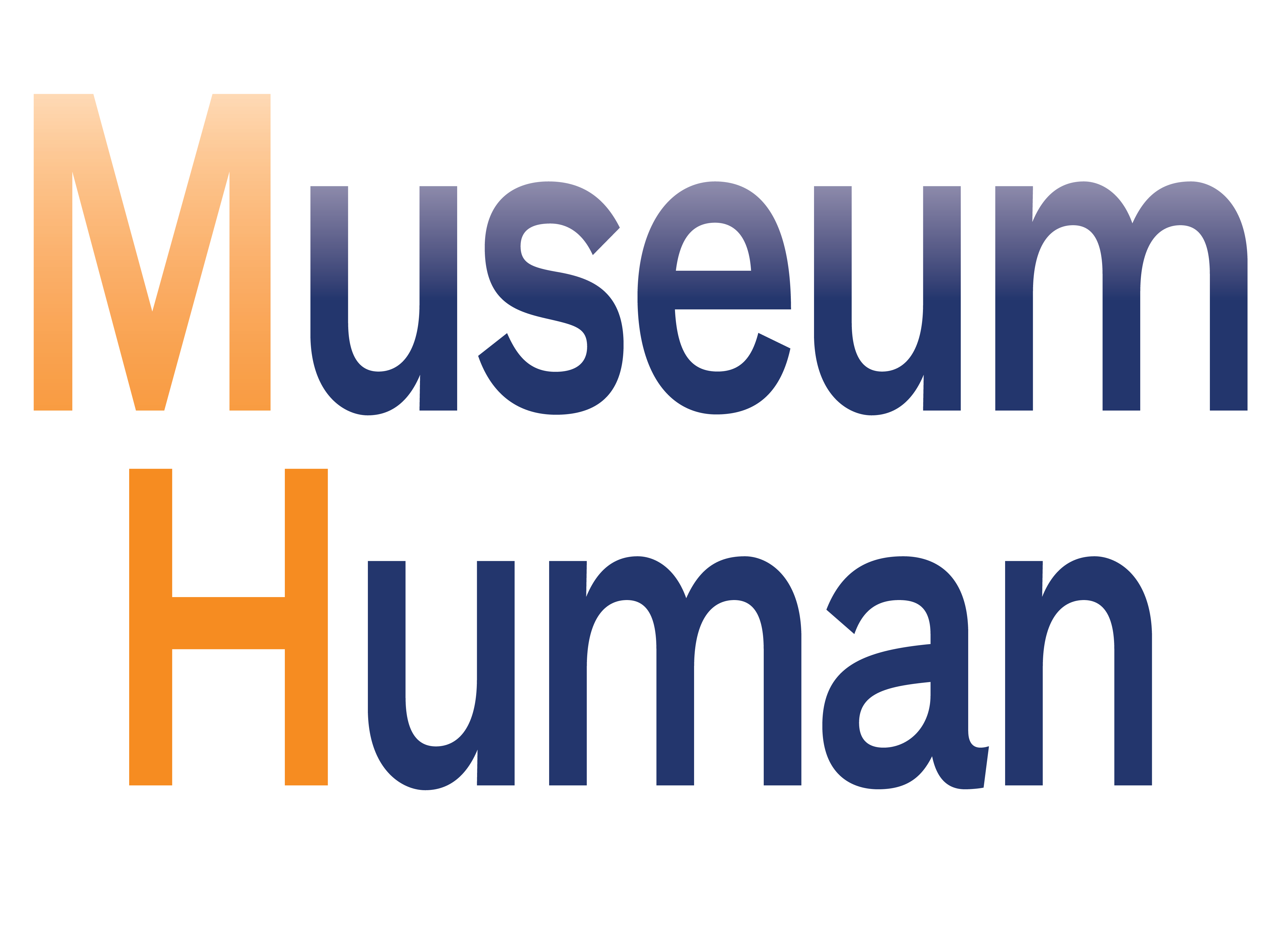

Guys, I think we're being disrupted (original image from HuffPo)
Beware any meme about which you ultimately laugh so hard that your Uber driver thinks you're a bunch of crazy kids.
So we're all supposed to disrupt something, that much is clear. Just what that thing is, isn't clear, but it's not supposed to matter because we'll just disrupt our way into a start-up (or turn our large organization into something like a start-up).
When you're running around a museum tech conference yelling "disrupt" at each other, a word might already be past its sell-by date.

Will "disrupt" join the list? (image of Life in Hell from BuzzFeed)
The term in its vogue usage is more of less the brainchild of Harvard innovativologist Clayton Christensen's book The Innovator's Dilemma, which repackaged Joseph Schumpeter's idea of creative destruction, which itself was really great if you were planning on a career in a "creative" field, and not so great if you were planning on the same manufacturing job your parents and grandparents had. Paul Gilbert in Sociology Lens has a great takedown of the term-idolotry here, though his echoing of tech-naysers like Evegeny Mozorov might leave some of my #musetech colleagues nervous.
(To be fair, even Christensen thinks "disruption" has been overused, though he may still be missing the point about what this business practice really is (a good analysis by Ben Thompson of whether disruption is top-down or bottom-up).
Those of us in creative fields like museum work need to remember that certain terms are weighted in favor of our class. It becomes too easy to look at others (manual workers, curators) as requiring disruption to save them. That's one danger of memes like disruption: they play into your ego. Even worse, you start to believe your own hype, or the hype of the company/movement you've joined.
In a museum workplace, "disruption" is usually digital-driven, but it isn't automatically digital—it's as much about collection practices and online accessibility and visitor experience as it is the latest technology. But too often, these new endeavors and the reasoning behind them become term-focused and come to be seen as change for the sake of change. Seeming-arbitrariness is the enemy of persuasion.
<img src="/content/images/2016/05/rules-of-thumb.jpeg" style="width:40%"; align="right"; hspace="20">
Who doesn't like rules of thumb?
Even a term like "best practices," innocuous to those who believe in them, can drive any organization down a rabbit hole if not applied humanistically, as Tim Casasola of org culture/design firm The Ready writes in Medium:
Just like how we’re susceptible to fads, organizations aren’t any less susceptible to them either. Management fads become extremely popular for a while, but just like AIM, Napster, and Myspace, they eventually get replaced with another fad.
This holds true especially if the fad is labeled as a “best practice.” …
Every best practice is a paradox by its nature and makes itself obsolete. It deems itself as a practice that’s done by the best-of-the-best, and this gets other companies to do it too. Once more and more companies implement the best practice, the best practice becomes like any other practice because it’s no longer being done by just “the best.” And then another best practice becomes the new business fad.
Any meme can become destructive when it abandons principles. Zappos is still using Holacracy, even while Medium has moved on, but both companies are sticking with their core values in hiring and practices. Casasola continues:
The lesson here is that the most successful leaders and organizations deeply understand the most successful practices’ core principles, even over implementing the practice itself.
Turning away from memes and hot terms to more human-centered narratives is a good first step. Keeping principles in mind as we push our (disruptive) ideas is equally as important.
We have to ask: are we disrupting practices or principles? Because what we should be disrupting is the how in order to better serve the why. This is especially true in a mission-driven, cultural organization like a museum.
Here are three things to do before you go around trying to disrupt:
- Run your idea by someone you trust in your organization to see if your idea is actually addressing a real problem that others perceive. (Asking yourself during morning mindfulness meditation does not count. Really. I've tried it.)
- Ask yourself who might oppose your idea, and why. Put yourself in their shoes. (Not literally. That's weird.) Not to play devil's advocate, but to understand the concerns of others. "Empathy" is a term I'm sticking with, even as it's taken a few hits lately.
- Find enthusiasts and allies. That way there's someone to carry on the idea even if you get too busy, or leave, or go extinct. I know, a grim thought. Just ask the dinosaurs.
I'd like you to join my LinkedIn network







